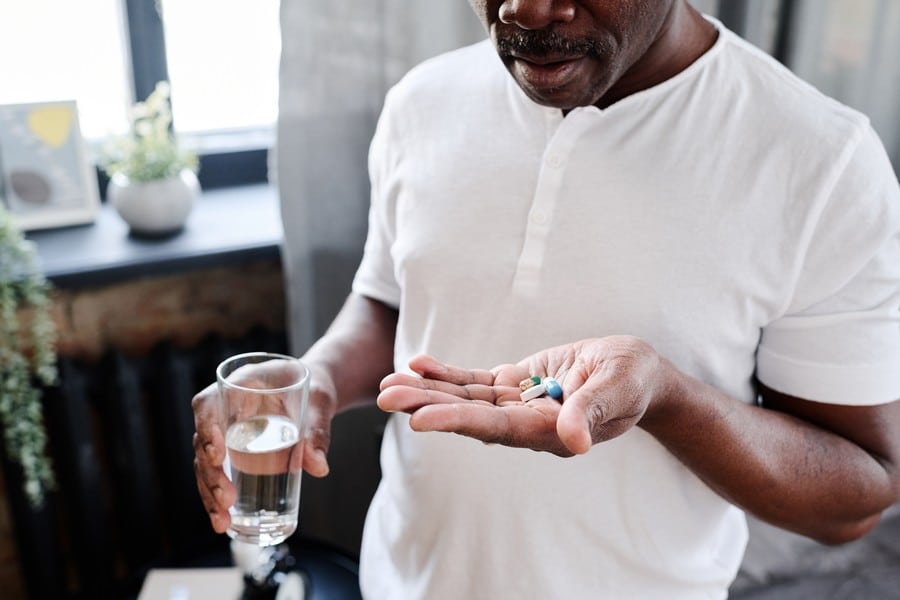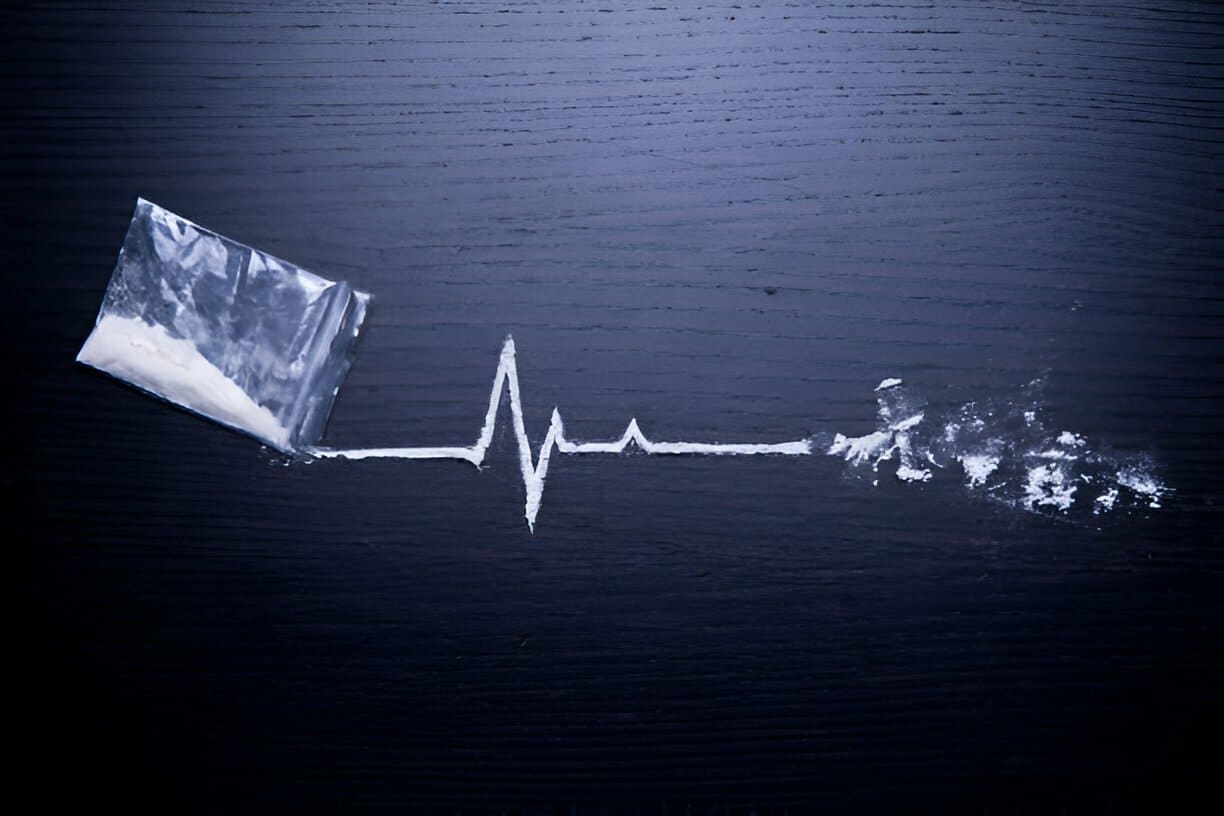Dilaudid is a narcotic pain medication that contains opioids. It works by activating the brain’s pain receptors to make them less responsive to pain.

Other opioid pain medications function similarly, such as methadone, fentanyl, oxycodone, morphine and others in the group. It’s used to relieve moderate to severe pain, including chronic pain.
If your loved one needs support dealing with an Alcohol Addiction, contact us today on 0800 999 1083. We can help you by recommending treatment options.
Hydromorphone is a class-A controlled substance (the most restricted category) in the United Kingdom, with severe penalties for illegal possession and distribution.
Dilaudid is available in various forms, including tablets, injectable ampoules, suppositories, and multiple-dose vials.
Because the effects of injecting Dilaudid are more potent than those of taking the tablet version, it is commonly used by people who abuse it. Some individuals snort the tablets after crushing them.
Other brand names for Dilaudid include Hydrostat, Palladone, Sophidone LP, Hymorphan, Laudicon, Hydal, Opidol, Hydromorph Contin, and Dimorphone.
Dilaudid’s street names include D’s, big D, M-80s, peaches, footballs, juice, smack, dust, and dillies. These are some of the most popular drug abusers’ names.
The medication binds to receptors in the brain and central nervous system (CNS) to numb pain. Dilaudid also causes an overabundance of dopamine to be released in the brain, resulting in pleasurable emotions. This triggers the brain’s reward centre, which sees the event as valuable and worthy of repetition. The more this occurs, the less dopamine the brain produces naturally, and the more dependent the body gets on Dilaudid.
Drug addiction is primarily a dysfunction of the brain’s reward system, which encourages people to engage in rewarding behaviour despite knowing the harmful repercussions. The more someone engages in the behaviour in question – in this case, consuming hydromorphone – the more the brain’s reward centres adjust to their production of chemicals such as dopamine, which produces a positive feeling when the behaviour is repeated. In contrast, decreased levels of such chemicals without such behaviour cause negative psychological responses.
The physical dependence on hydromorphone can develop as a result of regular use over time. When an individual’s system grows accustomed to the presence of specific quantities of a chemical, it becomes reliant on those levels to function normally. If a person who is dependent on a substance abruptly ceases using it, their brain and body may begin to malfunction – with a variety of symptoms that are collectively known as withdrawal syndrome – until the system has re-normalised after a while.
Addiction and dependence are inextricably linked. This does not, however, imply that they are the same thing. You may be psychologically addicted to a drug or behaviour, but you may not be physiologically dependent on it. You can be physically addicted while being emotionally and psychologically unaffected.
Users can build a tolerance to the chemical within two or three weeks. Once AACtolerance develops, individuals who take the tablets regularly are more likely to complete their prescription ahead of schedule. This is because the usual dose no longer has the same effect on the body as it previously did, and it can lead to physical dependence or addiction even if the drug is taken as prescribed.
Addiction is still an incompletely understood phenomenon in terms of what causes addiction in a particular person. We still don’t understand why one person develops an addiction while another, in similar circumstances, does not. However, both hereditary and environmental factors are recognised to play a role in addiction development.
The two fundamental reasons for hydromorphone addiction are hydromorphone being administered in a medical environment and taking hydromorphone regularly as a recreational substance. Someone who is prescribed hydromorphone for medical reasons and then stops getting it after establishing an addiction and dependence may turn to illegally obtaining it – or other opioid drugs – to avoid withdrawal.
Fundamentally, no one who never uses hydromorphone will get addicted to it, but the more – and the more frequently – someone takes it, the more likely they are to become addicted to it. With those cautions in mind, below are some of the most common risk factors for hydromorphone addiction:
Signs and Symptoms of Dilaudid Addiction Individuals with a history of substance abuse or recreational drug use are more likely to abuse Dilaudid, but they are not the only ones. Abuse of Dilaudid may begin with a legal prescription for pain relief. When Dilaudid is taken on a regular basis for a long period of time, a tolerance to the drug may develop, requiring the individual to take bigger doses to maintain effectiveness. Physical dependence might develop over time as a person consumes more Dilaudid regularly. Chronic Dilaudid use can modify the brain’s chemical pathways, making it desirable to keep taking the drug to maintain feeling good. Addiction is a disease of the brain that affects the areas of the brain that control impulses, regulate mood, and process rewards. People who are addicted to drugs are unable to control how much of the medicine they consume at any given time or how frequently they take it. Although physical dependency and withdrawal symptoms are both potential markers of addiction, they are not always present. Addicts are more likely to engage in impulsive, risk-taking, and unpredictable activities and have mood swings. They may become secretive and withdrawn in social situations and stop doing things they used to enjoy. Drug-seeking and drug use may become a way of life, and work/school productivity is likely to suffer as a result. Someone fighting a Dilaudid addiction may sleep at odd hours and modify their eating habits, resulting in severe weight changes. Even in those with no legal or financial problems before using Dilaudid, money problems and criminal conduct can be symptoms of addiction. Dilaudid addicts are unable to control their drug consumption. They may continue taking the substance while fully aware of the numerous physical, emotional, social, financial, and other negative repercussions. It is not recommended you try to quit taking Dilaudid without professional guidance due to the nature of the withdrawal side effects and drug cravings that may occur when a person stops using this potent opioid. To properly eliminate the medication from the body and reduce potential withdrawal symptoms, opioid dependency and addiction must first be addressed with medical detox. Therapeutic procedures and counselling sessions should follow detox as part of a full treatment programme. Dilaudid, like other opioids, can develop an addiction, manifesting as withdrawal symptoms when the drug is stopped or removed from the body. Within several hours of the last dose, a person may have the following symptoms: restlessness, anxiety, yawning, chills, irritability, depression, nausea, abdominal cramps, weakness, joint and back pain, sleeplessness, diarrhoea, hypertension, fever, elevated heart rate and respiration levels, perspiration, tearing, and a runny nose. Withdrawal symptoms may motivate people to continue using Dilaudid even after their prescription has expired if they no longer require pain relief. Contact a specialist straight away if you’re experiencing withdrawal symptoms. Follow all directions you’re given for dealing with withdrawal symptoms. Unless otherwise specified, you might find the following suggestions helpful: If you’re using Dilaudid, you’re most likely experiencing some abuse side effects. The number of symptoms you will experience – and the intensity of those symptoms – will frequently be determined by the frequency with which you use and the length of time you have been addicted. Dilaudid has short-term effects that are comparable to those of other opioids. Dilaudid interacts with opioid receptors as soon as it enters the body, altering pain perception while also releasing dopamine. Dopamine is typically released when you engage in normal yet ultimately enjoyable activities such as eating and exercising. It gives you a sense of satisfaction, making you want to repeat the action. Dilaudid releases a substantial amount of hydromorphone, which means that a user might quickly get hooked in an attempt to replicate the sensation of satisfaction and pleasure. Dilaudid’s short-term effects can be felt within 15 minutes of taking a dose. These are some of the effects:Dilaudid Addiction withdrawal symptoms
Dangers and Effects of Dilaudid Addiction and Abuse
To get a better high, those who abuse Dilaudid recreationally may mix it with alcohol or Benzodiazepines. These three medicines are all CNS depressants. When these medications are combined, their effects are amplified, but respiration and heart rate are severely slowed.

When Dilaudid is used with other drugs, it might cause respiratory failure, coma, seizures, and even death.
People addicted to Dilaudid frequently want to recapture the happy and calm feelings they first felt when using the medication, so they strive to recreate this “rush” as much as possible. This frequently leads to the abuse of more potent narcotics, such as Heroin.
You will develop more severe side effects if you abuse Dilaudid for an extended time. Respiratory depression can be caused by taking high doses of Dilaudid for a long period of time. The amount of oxygen available to the brain is reduced as a result of this illness. When the brain is deprived of oxygen for an extended period of time, the result is frequently brain damage or coma. Long-term Dilaudid use can alter your stress response and overall decision-making. The following are some of the long-term consequences of Dilaudid abuse:
Overdosing on Dilaudid occurs when you take more than your body can handle. Many people overdose accidentally while increasing their dose to deal with their growing tolerance and the associated withdrawal symptoms. Overdosing on Dilaudid can cause a variety of symptoms, which vary depending on the amount used, such as:
Dilaudid users frequently suffer from misdiagnosed or undertreated mental diseases. Schizophrenia, alcoholism, bipolar disorder, anxiety disorders, depressive disorders, and other substance misuse disorders are some of the co-occurring conditions identified in Dilaudid abuse.
Unfortunately, opioid addiction is a serious and growing problem in the United Kingdom. Still, there is some good news: there are now a wide array of high-quality treatment centres around the country that have extensive expertise in treating those addicted to opioids, including hydromorphone.
Detoxification and withdrawal are usually followed by counselling in the treatment of addiction. The first phase treats the urgent demands of physical dependence. At the same time, treatment identifies and resolves the deep-seeded psychological roots of addiction and equips addicts with relapse-prevention strategies.
Some treatment regimens may include the use of medicine prior to – or even during – detoxification. For example, safer legal opioids may be exchanged for more problematic ones, making it easier to reduce dosages gradually. Some patients may need to take this medicine for months or even years before attempting to wean themselves off opioids.
Don’t go through the process of recovery alone. Treatment providers can answer your questions. Get in touch with one today.
Call 0800 999 1083 today!
Inpatient and outpatient treatment solutions for hydromorphone addiction may be available at rehabilitation centres. Inpatient treatment is the more effective strategy for addiction recovery because it expects the patient to move into the centre where the treatment is administered and controlled and supported by specialised staff 24/7, helping the addict stay away from previous peers and locations that consist of trigger consumption. Detoxification and counselling, as well as a variety of other factors such as food and fitness routines, will be part of inpatient treatment, with stays often lasting one to three months.
Therapies used in outpatient rehab can be similar to those used in patient strategies. Outpatient sessions are commonly used as part of aftercare or follow-up therapies, as well as the primary treatment strategy for patients with a less severe addiction (or fewer/milder withdrawal symptoms) or those who cannot be absent from outside commitments. However, the patients return to their homes to spend the night and to their life when outside the treatment hours.
As previously said, therapy is at the heart of addiction recovery. In the treatment of hydromorphone addiction, a variety of different therapy models and approaches are widely used, including:
CBT is a sort of therapy that tries to help people change their negative thought patterns. It is predicated on the notion that negative thinking and acquired behavioural habits are linked to psychological problems. CBT is a solution-based strategy for patients who desire to improve their ingrained behaviours.

You’ll learn more effective, constructive methods for dealing with socio-environmental triggers and how to treat and prevent relapse. If you learn to change these negative attitudes about yourself, your self-esteem and confidence will improve, and your risk of substance abuse will decrease.
Traditional 12-step programmes are extensively utilised and regarded as one of the most effective treatments for substance use disorder. In the 1930s, the programme was designed as a solution for those who needed to get clean to escape going to prison. Individuals suffering from addiction can discover meaning in their life through a combination of group treatment and self-acceptance, as well as surrendering to a higher power and following the 12 principles.

BACP accredited psychotherapist with 16 years experience working in mental health specialising in psychodynamic person-centred therapies treating those with a range of mental health disorders including anxiety, depression, OCD and Addiction.

Fill in your details and we’ll send you a message via SMS.

No matter where you live, there are drug and alcohol rehab options for you to discover. Treatment providers are waiting to answer your questions. Get started today.

Ever felt that gnawing ache or burning sensation in your gut after a night of drinks? You’re not alone. Stomach pain after drinking is a common complaint, and there are a few reasons why it might happen. Let’s delve into the science behind the discomfort and explore ways to soothe your stomach. The Irritating Truth: … Continued

Cocaine, a stimulant known for its short-lived burst of energy and euphoria, hides a dark side. Behind the initial high lies a dangerous potential for overdose, with severe health consequences and even death. This article delves into the world of cocaine overdose, equipping you with the knowledge to recognize the signs, understand the dangers, and … Continued

Adult smoking habits in the UK refer to how often and in what ways people aged 18 and above use tobacco. This includes everything from smoking cigarettes every day to occasionally lighting up, as well as using other tobacco products. Understanding these habits is important for several reasons: Public Health: Smoking causes many diseases that … Continued

Addiction in the UK is a complex issue that is connected to various aspects of society such as healthcare and law enforcement. It affects people from all backgrounds and has negative impacts on families, communities, and the entire nation. Understanding addiction involves not only looking at the uncontrollable use of substances and repetitive behaviors but … Continued

Don’t go through the process of recovery alone. Treatment providers can answer your questions. Get in touch with one today.
Call 0800 999 1083 today!








